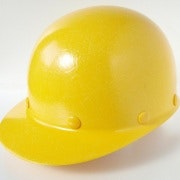Lafarge, Holcim boards ok merger, confident on antitrust issues
The world’s top two cement makers are betting their merger plans aren’t going to run into an antitrust wall.
The boards of France’s Lafarge and Switzerland’s Holcim met separately over the weekend and approved plans for a merger that would create the world’s largest construction-materials company, with a combined market value of $US50 billion ($53 billion), a person familiar with the matter said.
Top Holcim executives are expected in Paris tonight AEDT, when the merger is likely to be announced.
The companies disclosed on Friday that they were in advanced talks but said a deal wasn’t certain. The swift progress toward completing a merger suggests the cement makers are confident they can overcome what are likely to be lofty antitrust hurdles.
Lafarge and Holcim are leading players in construction materials like cement, gravel, and asphalt, which is used to pave roads. Because the cement market is largely local — cement is cheap to make but expensive to transport — both companies have expanded in many of the same markets around the world.
The companies’ combined market share of cement-making capacity would approach 60 per cent in France, Canada and Morocco and 30 per cent in the US They would have annual sales of nearly $US43 billion, dwarfing rivals such as Germany’s HeidelbergCement, with $US18 billion in sales, and Mexico’s Cemex with $US15 billion.
A Cemex spokesman declined to comment. A Heidelberg representative couldn’t be reached for comment.
The sheer size of the two companies means the antitrust road is going to be challenging, especially in the US and Europe, said Ian Osburn, an analyst at Cantor Fitzgerald in London.
Marco Slotboom, an antitrust lawyer at VVGB in Brussels, said the history of mergers in the cement-making sector will also mean greater scrutiny.
The European Commission is already probing Holcim’s acquisition of West German cement plants owned by Cemex, as well as the combination of Holcim and Cemex’s assets in Spain, which will leave Holcim with a 25 per cent stake. Brussels warned in October that the former deal might reduce competition in parts of Germany and Belgium, where the two companies compete.
The commission also has been investigating Holcim, Lafarge and six other companies for operating a suspected cartel in cement and cement-based products since December 2010.
Lafarge and Holcim have started discussing the need to sell assets in different parts of the world to get regulatory approval, said the person familiar with the matter. These could include selling cement plants and processing facilities for aggregates, which are used to make concrete.
The companies may have to sell up to 4 billion euros ($5.9 billion) worth of assets to overcome the concerns of antitrust authorities, Mr Osburn said. “There would be some quite serious antitrust issues requiring serious asset sales, but that may be a price that shareholders are willing to pay,” he said.
Holcim and Lafarge have battled overcapacity and sluggish growth in European construction, which hasn’t recovered from its debt crisis and the collapse of the Spanish housing market. The companies also face slower building activity in some developing countries, where Holcim and Lafarge have invested heavily.
Lafarge and Holcim on Friday cited “the strong complementarity of their portfolio and the cultural proximity between the two companies” as rationale for considering the merger.
Lafarge shareholders will be offered the opportunity to swap each share they hold for a Holcim share, in a deal that would value Lafarge at more than $US25 billion.
If the deal is completed, the new company would be based in Switzerland and led by Lafarge Chairman and Chief Executive Bruno Lafont, the person familiar with the matter said. The company would have operating headquarters in Paris and in Switzerland.
A deal would inject a burst of energy into Europe’s mergers and acquisitions market, where activity is still lagging other countries. There were $US199.2 billion worth of deals targeting European companies in the first quarter of 2014, up 11 per cent from the year earlier period, according to Dealogic. That compares with growth of 23 per cent globally, Dealogic found.
Additional reporting: Tom Fairless, John Revill, Shayndi Raice and Dana Cimilluca













